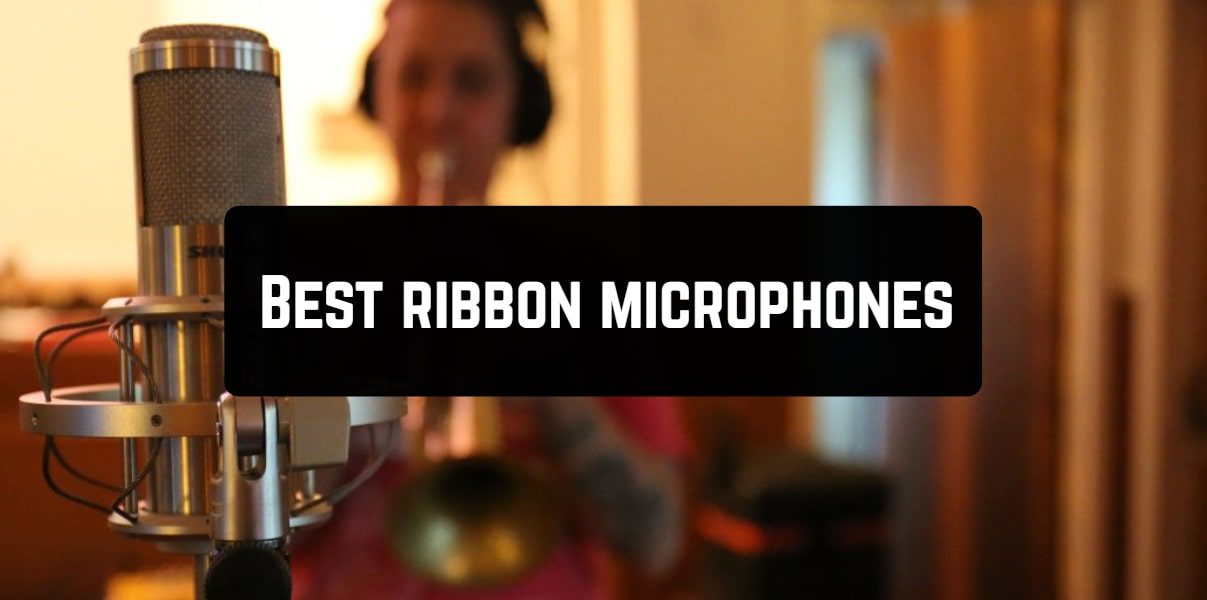After many decades of undeserved oblivion, ribbon microphones are at their peak in popularity.
This historic reincarnation was due to the significant contribution of Royer Labs engineers. They have proven that ribbon technology is not a forgotten past, but a promising future.
But, other manufacturers have also supported this trend and created many quality microphones. This list includes the best ribbon microphones. They combine classic features with modern technology.
Royer R-10 Ribbon Microphone
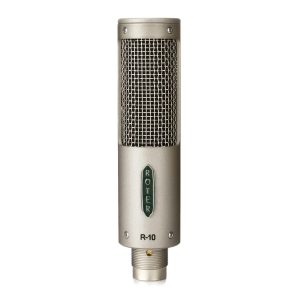
In this microphone in order to increase the sensitivity and signal-to-noise ratio is applied two-tape capsule.
It has an original magnetic circuit consisting of two counter-magnetized neodymium magnets. It also consists of a median, two side pole tips-magnetocouples.
This all forms two air gaps in one plane. There are two connected ribbons in series. It gives double the electrical voltage at the output.
It enters the primary winding of the transformer. The side pole lugs of this compact magnetic circuit shield the ribbons.
They are located in the middle air gap, against external electromagnetic fields.
The increased signal at the level of the dynamic coil microphones is removed from the secondary winding of the step-up transformer. This microphone has a constant over the entire operating range of the directional characteristic.
It also has the ability to emphasize the level of low frequencies. It is the ideal microphone for studio sound transmission and recording in both analog and digital systems.
Check also 9 Best microphones for recording vocals under $500
Royer Labs R-121
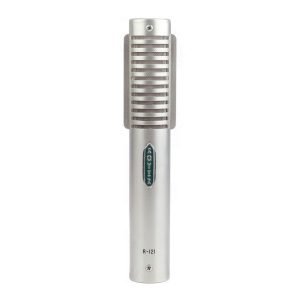
It has a warm natural sound. This microphone also provides faithful, the detailed transmission of all its aspects.
It is ready to withstand the highest values of sound pressure. The Royer Labs R-121 contains an Eight direction chart.
This ensures a high-quality recording of sounds. Their sources are placed in front of and behind the microphone.
This microphone is equipped with a massive neodymium magnet. It has functional electronics and plays low frequencies up to 20 Hz.
As for ergonomics, it should be noted that the position of the microphone in height is not adjustable.
The height of the tripod and the holder are designed for mounting on a table. The position relative to the speaker’s head will have to be adjusted by tilting the microphone.
The sensitivity of the microphone is one of the main characteristics. When installing the microphone, it will be necessary to consider the location of the noise source to cut its effect.
ART AR5 ACTIVE
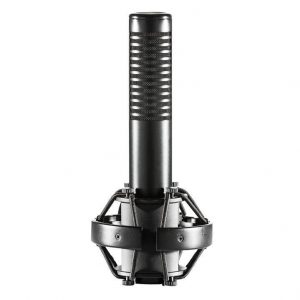
It will also come in handy for recording copper and wood brass instruments in the low-frequency range. It can also be supplied in stereo pairs.
This microphone can be used for a variety of purposes. It is particularly popular with vocalists who like clear, high-quality sound.
Besides, this microphone will be a great decoration for any frame.
Ribbon microphone has always had a cleaner sound than other types of microphones. So, combining old features and modern technology,
this microphone is an ideal tool for good sound recording.
An important feature of this microphone is that it has a hypercardioid pattern of directionality. This is achieved through an acoustic labyrinth.
Besides, it reduces the penetration of signals from the back. It facilitates the use of the microphone in the studio and on stage.
CAD Audio CADLive D82
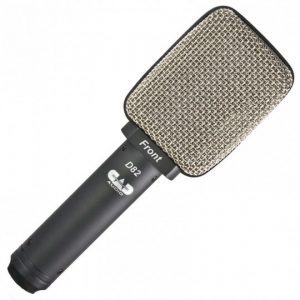
The important achievement was the idea of using the primary amplification stage in ribbon microphones.
This increases their sound sensitivity to the level of modern capacitor microphones. It also optimizes the output electrical resistance.
Thus, this microphone became the world’s first active ribbon microphone. There is no need to use specialized microphone preamplifiers.
Using modern neodymium magnets and the unique design of the ribbon capsule, this microphone has set a new industry standard.
The size and weight of ribbon microphones do not exceed the dynamic microphones.
This microphone has a sound direction diagram of the “eight” type. This ensures virtually no negative Proximity effect. It also ensures a good reproduction of sound sources outside the main axis of the microphone’s direction.
It is especially important when working in Over Head mode.
Rode NTR Premium Active
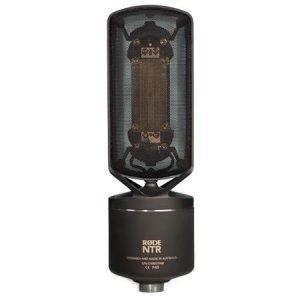
In many professional studios, the Rode NTR Premium Active microphone is used for recording guitar, drums, and other instruments.
Besides, Rode NTR Premium Active shows outstanding results when recording an acoustic guitar.
It can also be used for grand pianos, strings, and woodwind instruments. The Rode NTR Premium Active is insensitive to changes in humidity and temperature.
It has a reliable design, which is confirmed by a lifetime warranty from the manufacturer.
Rode NTR Premium Active in the sound industry has started a new era of revival of ribbon microphones.
Rode NTR Premium Active was the first active ribbon microphone in the world, which was able to overcome. The main drawback of this technology is the low threshold of sound sensitivity.
This fact made the Rode NTR Premium Active suitable for successful operation in any recording situation. You can use it without the need for a specialized microphone preamplifier.
The Rode NTR Premium Active internal electronic circuitry achieves a sensitivity level of 14 dB higher.
sE Electronics X1R
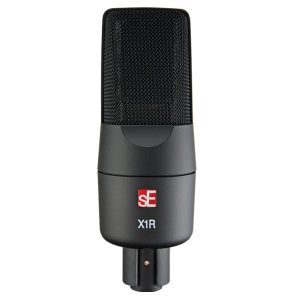
It features the warmer, more intense sound of the original JEN 5840W. This fact makes this microphone the optimal choice for recording vocals and musical instruments.
This is achieved through the use of ultra-thin aluminum tape. It is only 1.8 microns thick, as well as a unique new microphone capsule design.
It has the most advanced active electronic circuit based on FET transistors. It provides a record low intrinsic noise and no distortion up to SPL 130 dB.
The feature of the output stage SF-2 also allows you to connect an ultra-long microphone cable without audible sound loss if necessary.
This microphone has been designed as a top-class professional device. The main direction of this microphone is a variety of acoustic musical instruments.
Here you can also include a remote position of the microphone. Adjust the presence of natural reverberation of the concert hall.
Nady RSM-5
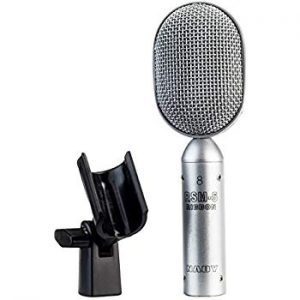
To activate the microphone, go to the “Sound device management” item of the control panel. You can also adjust the recording level in the microphone properties.
If you want to enable audio playback via the microphone jack. Be sure to select the appropriate playback device.
When connected to a computer, the red LED on the microphone will light up. This indicates that the microphone is on.
Pressing the button once will turn off the recording, and the LED will start blinking.
Besides, the microphone grille on the inside is illuminated by a blue LED. If you remove the pop filter, the LED can be a little annoying. Especially if you work in the dark.
Recording management is simple enough. Use the GAIN control to set the recording volume level. With the headphones control, adjust the volume of the headphones if you use them.
With headphones, you can hear both your voice and the track being played on your computer at the same time. In this case, the microphone acts as a mixing console.
Golden Age Project R1 MKII
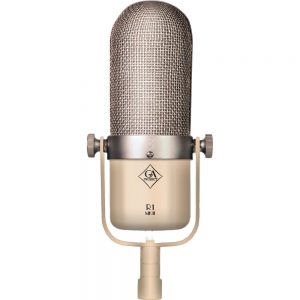
With a thickness of only 1.8 micrometers, the NTR tape is available in the optimal frequency range. This ensures the highest level of microphone sensitivity.
The integrated suspension that the developers installed in this microphone is so efficient. No external mounting is required for this microphone.
Tape microphones are often produced by hand cutting elements. As a result, the finest parts fail early as they are rubbed along the edges.
Unlike other manufacturers, this company uses laser cutting in the production of microphone tapes.
This allows more precise cutting of the microphone tape. It minimizes the deformation of the edge and increases the life of the element.
Excellent connection and sensitivity of the microphone tape is ensured by universal mounting. Acoustic transparency is enhanced when using this microphone.
The meshes have low density and high rigidity. The sturdy frame around the microphone tape is within the deviation area of the bidirectional capsule diagram. The microphone capsule is protected with an all-metal shell.
MXL Mics 770
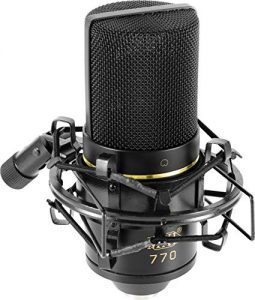
Unlike conventional microphones that can only pick up sound from one side, this microphone can pick up sound from both sides.
The G8-type chart is ideal for capturing sound at overhead positions when recording. The “eight” allows the microphone to be directed.
So that the small drum is out of the largest sensitivity zone. It is effective at subtracting sound that arrives at the aperture in an off-axis direction.
In the capsule of this microphone, two aluminum ribbons are placed one behind the other at a distance.
The ribbons are corrugated not only horizontally, but vertically as well. This makes them more durable than other manufacturers’ products.
This ribbon microphone has end addressing. Two red dots on the microphone head ring mark the position of the ribbons. The dots should form a vertical axis for better directionality when the microphone is mounted on a rack.
This model has a pronounced lift at low frequencies. The capsules of this ribbon microphone are assembled manually.
MXL R144 HE
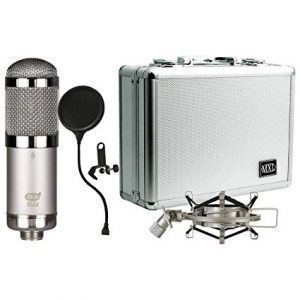
The microphone has an exceptional dynamic range. When using it, there is no need to compress the signal.
Thus, it provides a deep and natural reproduction of an acoustic source. It is ideal for grand pianos and strings and is great as an “overhead” for percussion installation.
This microphone gives a powerful sound when capturing the sound of a guitar.
For decades, ribbon microphones have been used by engineers for natural sound reproduction.
Their natural performance is very different from condenser microphones, which lack harmonic depth.
Input and output transformers generate low noise levels when amplifiers are used to amplify the signal.
MXL 550/551
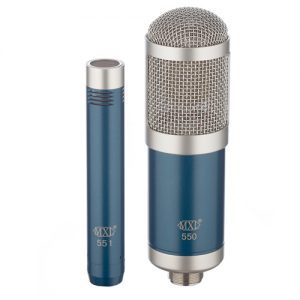
The model is characterized by the directionality of the diagram in the form of a figure of eight. This characteristic gives the microphone versatility and practicality.
The model for high sound quality is equipped with a special strong tape Roswellite.
This high-quality tape allows you to maintain sound stability in situations where sound pressure is very high.
The frequency range of this model is quite wide: 30 Hz – 15 kHz. This is enough to work with almost any kind of sound. And the SPL 146dB sound pressure level.
The microphone with high technical characteristics has a weight of 0.4 kg. It is supplied by the manufacturer in an aluminum box complete with a holder on a rack.
The warranty on the equipment is 12 months.
Check also 12 Best External Microphones

